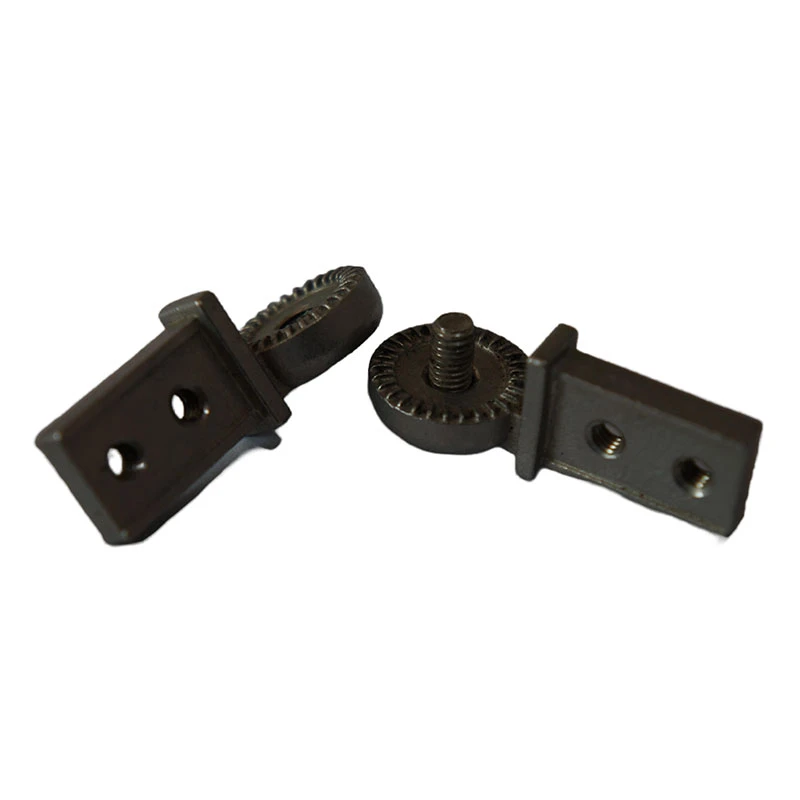stamping die parts
The Importance of Stamping Die Parts in Manufacturing
Stamping die parts play a crucial role in the manufacturing industry, especially within the realms of metal fabrication and automotive production. As production methods continually evolve, the demand for precision-engineered components has increased significantly. Stamping dies are essential tools used to cut, shape, and form various materials, predominantly metals, into desired shapes and sizes. Understanding their components, applications, and advantages can provide valuable insights into their significance in modern manufacturing processes.
What Are Stamping Die Parts?
Stamping die parts are the various components that make up a stamping die, a specialized tool used to create specific shapes by applying pressure to a material, typically sheet metal. The main parts of a stamping die include the upper and lower sections, known as punches and dies, respectively. The punch is the component that exerts force to shape the material, while the die is the cavity that defines the final form of the stamped product. Other critical parts of a stamping die include guides, strippers, and supports, which ensure the precision and efficiency of the stamping process.
Types of Stamping Die Parts
1. Punches These are the male components of a die set and come in various shapes and sizes to achieve different configurations. Industries utilize various punches depending on the intended shape and thickness of the material being processed.
2. Dies The female counterpart to punches, dies create intricate shapes and patterns in the metal sheets. They are typically custom-designed to produce specific parts, which can vary dramatically based on industry needs.
3. Strippers Strippers are used to remove the stamped part from the die after the stamping operation. They prevent parts from being pulled back into the die, ensuring smooth operation and consistent production.
4. Guides These components maintain alignment between the punch and die, which is crucial for achieving the desired precision in the final product. They help reduce wear and tear by ensuring that the punch enters the die in the correct position.
stamping die parts

5. Supports Stamping operations can exert significant forces on tools and parts, making supports essential to distribute stress more evenly, enhancing the lifespan of the die components.
Applications of Stamping Die Parts
The applications of stamping die parts are as wide-ranging as the industries that employ them. In the automotive sector, precise parts such as brackets, chassis components, and body panels are produced using stamping dies. Electrical and electronic industries also rely heavily on die-stamped components, which can include connectors, housings, and custom metal parts designed for various applications.
Beyond these sectors, stamping dies are also prominent in the fabrication of consumer goods, aerospace components, and medical devices. Their versatility stems from the ability to produce high volumes of accurate parts quickly and cost-effectively, making them a preferred option for manufacturers aiming for efficiency and quality.
Advantages of Using Stamping Die Parts
One of the primary advantages of employing stamping dies in manufacturing is the ability to produce components with high precision and repeatability. With the right design and materials, manufacturers can achieve tight tolerances that are critical for functional and assembly processes. Additionally, stamping is often faster than alternative manufacturing methods, such as machining, particularly for mass production.
Cost-effectiveness is another benefit, as the initial investment in stamping die parts can lead to significant savings in the long run due to quick production rates and lower material waste. Furthermore, advancements in die design and technology have led to the development of more durable materials and innovative manufacturing techniques, further enhancing the efficiency and output of stamping processes.
Conclusion
In conclusion, stamping die parts are integral to the success of modern manufacturing. Their ability to produce precise, complex components quickly and cost-effectively makes them invaluable in various industries. As technology continues to advance, the role of stamping dies will likely expand, paving the way for new innovations in manufacturing processes and applications. Understanding the components and functions of stamping die parts is essential for manufacturers aiming to leverage these tools to their fullest potential.
-
Precision Casting AI Solution with GPT-4-Turbo | Optimized QualityNewsAug.02,2025
-
Precision Sheet Metal Stamping Manufacturer | Fast & ReliableNewsAug.01,2025
-
OEM Sand Cast Pump Valve Fittings - Baoding Hairun Machinery And Equipment Trading Co., Ltd.NewsAug.01,2025
-
Custom OEM Impellers | High Efficiency & PrecisionNewsAug.01,2025
-
OEM Sand Cast Pump Valve Fittings - Baoding Hairun Machinery | Customization, Quality AssuranceNewsAug.01,2025
-
OEM Sand Cast Pump Valve Fittings - Baoding Hairun Machinery And Equipment Trading Co., Ltd.NewsAug.01,2025















